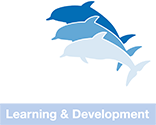
Are leaders born or made?
Are leaders born or made? Well, we could all probably bring to mind someone we consider to be a “natural leader”, but there are now many leadership models which challenge the notion that these traits cannot be learned.
Action Centred Leadership, designed by John Adair and perhaps one of the most recognisable leadership models today, certainly challenges this idea and suggests that effective leaders in fact focus on three interconnected spheres of ‘needs’ - task, team and individual - that are imperative for success.
As an organisation who focuses on the benefits of blended learning, one of the most interesting elements of leadership and team development theory is the opportunity to explore the synergies between L&D models and how we can create a richer learning experience by blending these models together in an experiential environment.
The strength of Action Centred Leadership is how the seemingly simple model hides its subtle complexities; a metaphor for the application of the model. For example, it is easy to focus on the needs of our day-to-day tasks and neglect the needs of, at times, either of the team and/or individuals. It seems so simplistic to say that we also need to also focus on these things, but in practice, it doesn’t always prove as easy as it sounds.
Part of this, I believe, is that we don’t always take into account how different we all are individually and, worse still, we don’t effectively communicate the impact of those differences. This is where we see strong links between Adair’s model, Belbin Team Roles and our Breakthrough Conversations programme. By having an overall awareness of the task, team and individual needs, leaders have a framework to help them overcome the challenges they face such as a lack of motivation, developing competence and managing internal conflict. By maintaining a higher-level outlook, the leader can then focus on the individual needs requiring their attention; rather than becoming embedded in the task. In addition, by understanding our dominant team roles (as well as the positive and negative traits associated with them) this allows us to contribute more effectively, which will have benefits under all three spheres.
Furthermore, if conflict arises, then utilising our Breakthrough Conversations 5-step process to speak up effectively while maintaining the dignity and credibility of all parties, will have a huge impact on the individuals concerned, the mutual purpose of the team and the successful completion of the task at hand.
As an organisation accredited to deliver all three models, we believe that they all offer huge benefits on their own merits. However, through a blended learning experiences that encompasses a range of theoretical models, we believe we are even better placed to really empower individuals to develop their leadership skills and help teams and organisations to create real, sustainable change that improves results.
Nevertheless, just understanding the principles which underpin these three models isn't enough to create an effective leader. As John Adair wrote: "You are not a leader until your appointment has been ratified in the hearts and minds of those involved. It's when people start using the word leader about you that you, as it were, become a leader." Therefore, it is the application of the theory that will enhance your leadership skills and that is where we believe experiential learning is most impactful!
If you are interested in developing individuals or teams within your organisation by utilising the training models outlined above, you can email us at: enquiries@gra.uk.com or click here to get a quote.
Image Source: Dreamstime



